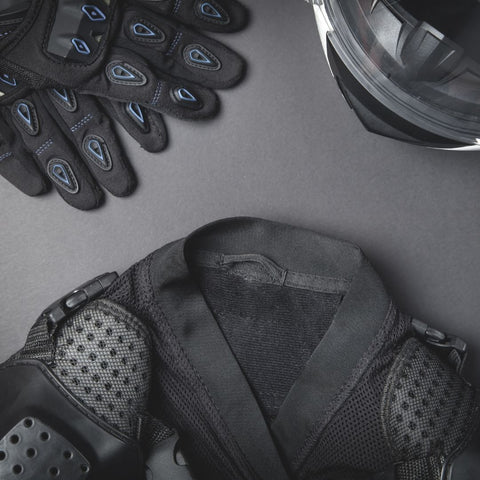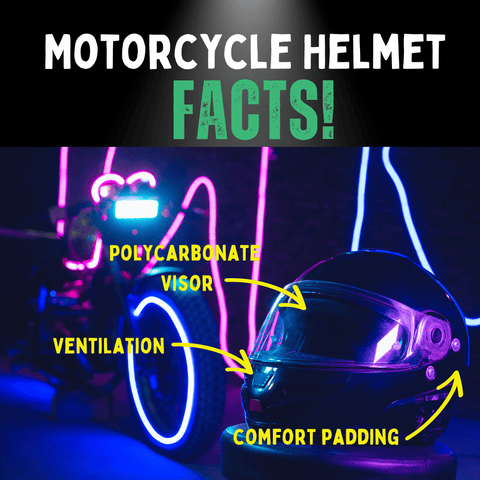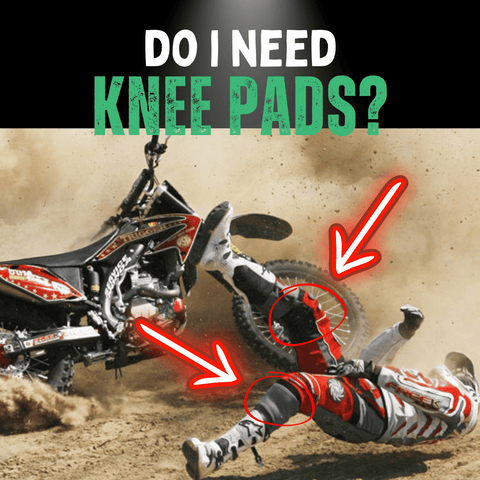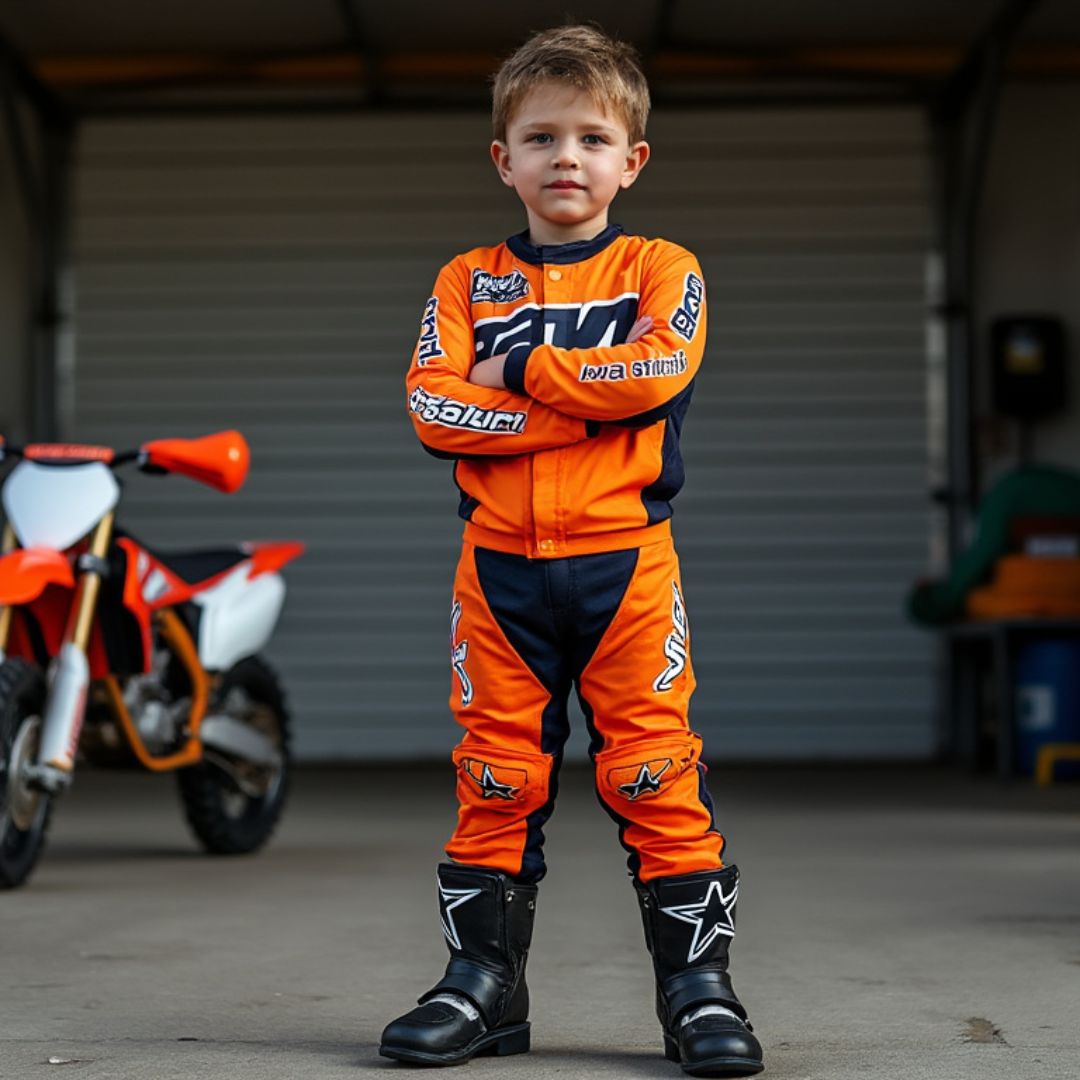
If you're gearing up your little adventurers for some thrilling outdoor riding on dirt bikes, quad bikes, or anything that zooms and vrooms, there's one thing you can't compromise on: safety.
According to RoSPA (The Royal Society for the Prevention of Accidents) in the UK, bike helmets sold in Britain must adhere to BS EN 1078 Standard, whereas snowsports helmets follow EU Standards CE EN 1077 Class B, and equestrian body protector vests abide by PAS 015:2011 or EN 13158:2009+AI:2012. (1)
That's a wake-up call, isn't it?
With emergency departments across the UK treating nearly half a million bicycle-related injuries among kids yearly, it's clear: the right protective gear isn't just important; it's essential.
This article is your go-to guide for making sure your child is as safe as can be, without dampening the fun of their outdoor escapades.
Let's Dive Into What You Need to Know:
Headwear Essentials (Helmets)
-
Certified Excellence: Your kid's helmet should be more than just a hard hat. Look for certifications like CPSC, EN-1078, or ASTM F1492. These aren't just fancy numbers; they're your assurance that the helmet can take a hit and protect your young rider.
"Ensure helmets meet recognised standards..."
-
Perfect Fits: A helmet that wobbles on your child's head is a no-go. Adjustable straps and dial systems aren't just for comfort; they're crucial for safety.
Tip: "Look for adjustable straps and dial systems for optimal fitting."
-
Breathability Advantage: Kids run hot, especially when they're racing around. Ventilated helmets keep them cool, making sure the only thing heating up is their speed.
Impact Absorbency Armaments (Pads)
-
Joint Defense: Elbows and knees need extra protection. Pads that are easy to wear and remove make safeguarding these crucial joints a breeze.
"Opt for padded sleeves with Velcro closures for easy wear and removal."
-
Hand Fortification: Don't overlook the wrists. A good pair of wrist guards can save a lot of tears and trips to the ER.
Choosing the Right Material for Pads
When it comes to pads for elbows, knees, and wrists, not all materials offer the same level of protection and comfort.
You want to look for materials that can absorb impact effectively while being comfortable enough for your child to wear for extended periods.
Foam padded protectors covered with hard plastic are a great choice, as they offer a balance between flexibility and impact resistance.
Memory foam and gel inserts can also provide extra cushioning for falls, making them ideal for young riders who are still getting the hang of things.
Remember, the right material should not restrict movement; it should enhance safety without compromising on comfort.
Visibility Enhanced Garbs & Accessories
-
Prominent Appearance: Bright and reflective gear makes your child stand out for all the right reasons, ensuring they're seen by everyone around.
Reminder: "Consider high-visibility gear from head to toe."
-
Weather Savviness: Dressing right isn't just about the temperature. Avoiding bulky clothes that can get caught ensures freedom of movement and safety.
-
Comfortable Grasp: Gloves aren't just for warmth. Ergonomic designs provide a better grip for those little hands.
-
Eye Defender: Protection doesn't stop at the skin. Sunglasses or clear protective glasses keep the dust and sun out of their eyes.
-
Skincare Fundamentals: A day out means sun exposure. Don't forget to apply broad-spectrum sunscreen to exposed skin.
-
Hydration and Nutrition for Outdoor Activities: Physical activities like riding demand a lot from young bodies. Keeping your child hydrated and well-nourished is crucial for their performance and safety. Always pack a water bottle, and encourage regular sips, even if they claim they're not thirsty. For longer adventures, consider bringing along snacks that are rich in energy and easy to consume, like fruit bars, nuts, or granola bars. Proper hydration and nutrition can prevent fatigue, keeping your child alert and responsive throughout their ride.
The Role of Lighting and Reflective Accessories
Visibility is key to safety, especially during dawn, dusk, or nighttime adventures.
Adding lighting to your child's bike or gear can make a huge difference.
Think about attaching LED lights to the bike frame, helmet, or backpack.
Reflective stickers or tape can also be used to increase visibility.
These accessories not only help your child see better but also make them more visible to others.
Encourage your child to wear reflective armbands or vests as part of their riding outfit to ensure they're seen from all angles.
Related: 5 Things Your Kids Should NEVER do on a Motorbike
Bicyclist Bonus Tips (Bike Equipment Specifically)
-
Bar Terminus Security: Handlebar end caps might seem small, but they can prevent serious injuries.
-
Linkage Coverage: Chain guards protect those little legs from getting caught—a must-have for peace of mind.
Maintenance Tips for Riding Gear
To ensure the protective gear continues to offer the best possible safety for your child, regular maintenance is key.
Here are a few tips:
- Helmet: Check for cracks or damage after a fall. Clean the helmet with mild soap and water, avoiding harsh chemicals that can degrade the materials.
- Pads and Guards: Inspect Velcro straps for wear and tear, and replace them if they lose their stickiness. Wash pads regularly following manufacturer instructions to keep them clean and functional.
- Reflective Accessories: Make sure any lights or reflective materials are clean and in good working order. Replace batteries in lights as needed to ensure they're always bright.
Taking care of your child's gear not only extends its life but also ensures it provides the maximum level of protection every time they head out for an adventure.
Regular checks and maintenance become a routine that reinforces the importance of safety in all outdoor activities.
Wrapping It Up
By now, you're equipped with the knowledge to make informed choices about your child's protective gear.
Remember, the right gear not only keeps them safe but also boosts their confidence, making every ride a joyous adventure.
Keep this guide handy, stay vigilant, and here's to many safe and exciting outdoor riding adventures with your kids!
Keep this guide bookmarked, as it's packed with insights from experts, vital statistics, and practical tips, all designed to help you swiftly navigate the vast world of kids' protective gear.
With the right approach, you can ensure your child's safety without ever putting a damper on their fun.
FAQs
What is the best way to ensure a helmet fits my child correctly?
To ensure a helmet fits correctly, measure your child's head circumference just above the eyebrows and use the manufacturer's size chart for guidance. A helmet should sit snugly, not move side-to-side or front-to-back, and sit level on your child's head, covering the forehead without obstructing vision. The chin strap should be tight enough that only two fingers can fit between the strap and the chin.
Can protective gear be reused for multiple children?
Protective gear can be reused if it's in good condition and hasn't been involved in a significant impact or accident. However, it's crucial to inspect it thoroughly for any signs of wear, tear, or damage. Helmets should be replaced after any impact or every 3-5 years due to material degradation.
How do I know when it's time to replace my child's protective gear?
Replace protective gear when it shows signs of wear, such as cracks, fraying straps, or faded materials, as these can compromise its effectiveness. Additionally, if your child has outgrown their gear, it's time for an upgrade to ensure continued safety and comfort.
Are there specific types of protective gear recommended for different activities (e.g., cycling vs. skating)?
Yes, different activities often require specific types of protective gear tailored to the risks involved. For cycling, a certified bike helmet is essential. For skating or skateboarding, wrist guards, knee pads, and elbow pads are recommended, in addition to helmets designed for multi-impact protection. Always check the gear's certification and intended use to ensure it's suitable for your child's chosen activity.









Share:
The Importance of Helmet Safety for Kids in Go-Karting and Dirt Biking
DIY Maintenance Tips for Kids Ride-On Toys